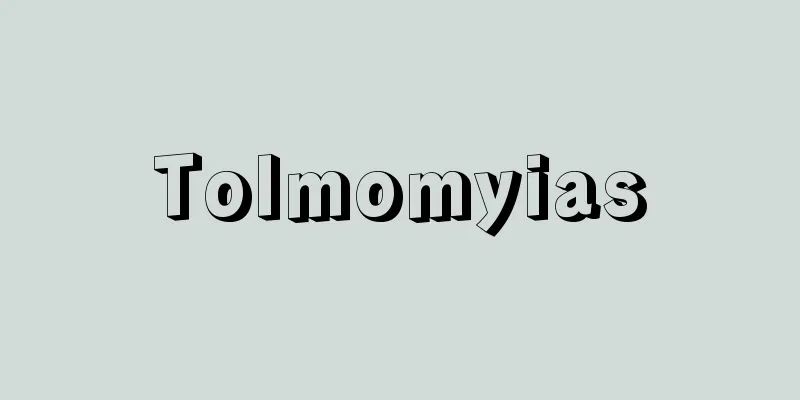Moor

|
Moist land covered with herbs, mosses, or shrubs that thrive in overly humid conditions. Usually, marshes form when lagoons, lakes, or other areas become shallow and filled with sediment, allowing sphagnum moss and reeds to grow and flourish. However, in places with high groundwater levels, the remains of plants that die each year do not decompose completely and accumulate as peat, so many marshes are accompanied by peat. Marshes can be divided into three types depending on the level of the groundwater level. Marshes with high groundwater levels and oversaturated moisture are called low-lying marshes, and are likely to form in river floodplains and swamps. Reeds and sedges grow here primarily. When peat accumulates and becomes higher than the groundwater level, a marsh is formed that is dominated by sphagnum moss, sundew, and cranberry, which can survive on rainwater alone. These are called high-altitude marshes, and Ozegahara (Gunma Prefecture) and Kushiro Marsh (Hokkaido) are typical examples. Marshes that are intermediate between the two and where marshes such as marsh grass and cotton grass grow are called intermediate marshes. Marshes tend to form in cold, rainy climates and are widely distributed in Northern Europe, Siberia, Alaska, Canada, and other regions. In Japan, there are large ones in the coastal and mountainous regions of Hokkaido, and they are also widely found in the snowy mountain areas of northeastern Japan, where they are called Yachi and Tashiro. Since the 1980s, it has become known that many marshes in snowy mountain areas were formed by increased snowfall during the post-glacial period. [Takehide Koizumi] VegetationIn ecology, it refers to a community dominated by herbaceous plants, such as in swamps, where woody plants cannot grow due to a humid environment, and is also called wet grassland. In swamps, low temperatures and excessive humidity inhibit the decomposition of dead plant matter, forming peat, on which marshes develop. Depending on the ecological conditions of the peat, they can be classified as low, intermediate, or high marshes. They can also be classified as eutrophic, mesotrophic, or oligotrophic, depending on the nutrient salt content. Low marshes are often eutrophic, and are home to reeds and sedges, while high marshes are oligotrophic, and are characterized mainly by Sphagnum mosses. [Shigetoshi Okuda] "The Geology of Peatlands - Exploring Environmental Changes" by Sakaguchi Yutaka (1974, University of Tokyo Press)" ▽ "Oze Marshlands - Suzuki Ryosaku's Photo Collection" by Suzuki Ryosaku (1987, Rokuko Publishing)" ▽ "Nature's Seasonal Almanac: New 100 Scenes of Japan 3: Lakes and Marshes" (1987, Shueisha)" ▽ "Kushiro Marshlands - The Present State of Japan's Environment" edited by Honda Katsuichi (1993, Asahi Shimbun)" ▽ "Japan's Great Nature 9: Kushiro Marshlands National Park, photographed by Morita Toshitaka (1993, Mainichi Shimbun)" ▽ "The Science of the Waterside - Considering the Environment from Lakes, Rivers, and Marshes" by Suzuki Shizuo (1994, Uchida Rokakuho)" ▽ "The Natural History of Ozegahara - Searching for the Secrets of the Landscape" by Sakaguchi Yutaka (Chuko Shinsho) [References] | | | | | marsh| | | | | | | grass| | |Shibutsu can be seen from Ushiku, which separates Kamitashiro and Nakatashiro in Ozegahara. Ozegahara is the largest highland marsh in Japan, covering an area of approximately 8km, and is well known for its colonies of Asian skunk cabbage and day lilies. Oze is designated as part of Oze National Park, and the entire region is a nationally designated special natural monument. Katashina Village, Tone District, Gunma Prefecture "Katashina Village, the Home of Oze" ©Katashina Village Office, Village Development and Tourism Division "> Oze (Gunma Prefecture side) Source: Shogakukan Encyclopedia Nipponica About Encyclopedia Nipponica Information | Legend |
|
過湿な条件を好む草本や蘚苔(せんたい)類あるいは低木に覆われ湿った土地。通常、潟や湖沼などが土砂で埋まって浅くなり、そこにミズゴケやアシなどが生育、繁茂することによって湿原ができるが、そうした地下水位の高い場所では年々枯死する植物の遺体が完全に分解せず、泥炭となって堆積(たいせき)していくため、湿原には泥炭を伴うものが多い。湿原は地下水位の高低により3種類に分けられる。地下水位が高く、水分過飽和な湿原を低層湿原といい、河川の氾濫(はんらん)原や沼沢地にできやすい。ここにはおもにアシやスゲ類が生育する。泥炭が集積して地下水位よりも高くなると、雨水のみで生活できるミズゴケやモウセンゴケ、ツルコケモモなどを主体とする湿原ができる。これを高層湿原といい、尾瀬ヶ原(群馬県)や釧路(くしろ)湿原(北海道)はその代表的なものである。両者の中間のヌマガヤやワタスゲの生育する湿原を中間湿原という。湿原は寒冷多雨の気候下でできやすく、北欧やシベリア、アラスカ、カナダなどに広く分布している。日本では北海道の海岸部や山岳地方に大規模なものがあるほか、東北日本の多雪山地にも広くみられ、谷地(やち)、田代(たしろ)などとよばれている。1980年代以降、多雪山地の湿原には、後氷期の積雪量の増加によって形成されたものが多数知られるようになった。 [小泉武栄] 植生生態学では、沼沢地などといった多湿な環境のため木本植物が生育できず、草本植物が優占する群系をいい、湿生草原ともよぶ。湿地では低温や過湿のため植物の枯死体の分解が阻害されて泥炭が形成され、その上に湿原が発達する。泥炭の生態的条件によって低層湿原、中間湿原、高層湿原の別がある。また栄養塩類含有量から富栄養湿原、中栄養湿原、貧栄養湿原に分けられる。低層湿原は富栄養湿原である場合が多く、アシ、カサスゲなどが生育し、高層湿原は貧栄養湿原で、おもにミズゴケ類で特徴づけられる。 [奥田重俊] 『阪口豊著『泥炭地の地学――環境の変化を探る』(1974・東京大学出版会)』▽『鈴木良策著『湿原尾瀬――鈴木良策写真集』(1987・六興出版)』▽『『自然歳時記 新日本百景3 湖沼と湿原』(1987・集英社)』▽『本多勝一編『釧路湿原――日本環境の現在』(1993・朝日新聞社)』▽『森田敏隆写真『日本の大自然9 釧路湿原国立公園』(1993・毎日新聞社)』▽『鈴木静夫著『水辺の科学――湖・川・湿原から環境を考える』(1994・内田老鶴圃)』▽『阪口豊著『尾瀬ヶ原の自然史――景観の秘密をさぐる』(中公新書)』 [参照項目] | | | | | | | | | | | | | | | |尾瀬ヶ原の上田代と中田代を分ける牛首付近から至仏山を望む。尾瀬ヶ原は面積約8kmに及ぶ日本最大の高層湿原地で、ミズバショウやニッコウキスゲの群生地としてよく知られる。尾瀬は尾瀬国立公園に指定され、地域全体が国指定特別天然記念物となっている。群馬県利根郡片品村 「尾瀬の郷 片品村」©片品村役場むらづくり観光課"> 尾瀬(群馬県側) 出典 小学館 日本大百科全書(ニッポニカ)日本大百科全書(ニッポニカ)について 情報 | 凡例 |
Recommend
Maritime History Series - Kaiji Shiryo Sosho
Edited by Sumita Shoichi. 20 volumes. Published in...
Gulf of Oman - Omanwan (English name)
A gulf in the northwestern Arabian Sea, between Om...
Concurrent disinfection
...In this case, substitute does not mean a so-ca...
Civil servant service discipline
Under the Meiji Constitution, an Imperial ordinan...
Agata Inukai Clan - Agata Inukai Clan
One of the four Tomo no Miyatsuko clans (Ken-inuka...
Florideophycidae
...Many species of the Porphyra genus, such as As...
Sensory ganglion
The nerve fibers are responsible for the nervous ...
Marrano
…The Ottoman Empire welcomed the Jews, and Thessa...
primary delusion
...Delusions are distinguished from superstitions...
Norway - Norwegian (English spelling)
A constitutional monarchy in Northern Europe. Nor...
Gal Vihāra (English spelling)
A Buddhist cave temple in Polonnaruwa, Sri Lanka. ...
Gensatsu - Gensatsu
1593 (Bunroku 2)-? A haiku poet from the early Edo...
Space Maladjustment Syndrome
...Sea sickness and motion sickness occur through...
Fuchs, L.
…P. Dioscorides' De materia medica, which lis...
Pickling fishery
This is a fishery that takes advantage of the tend...









